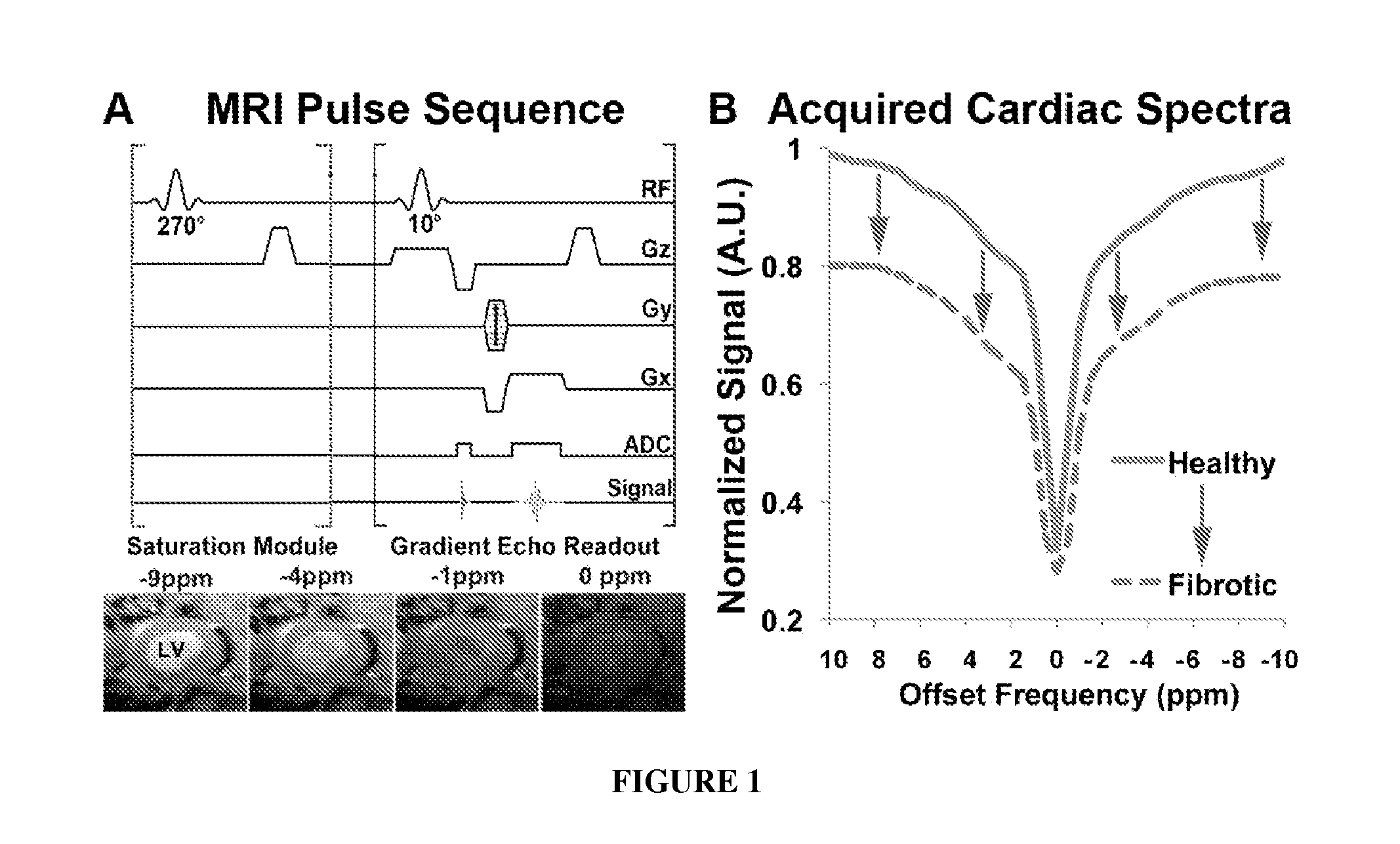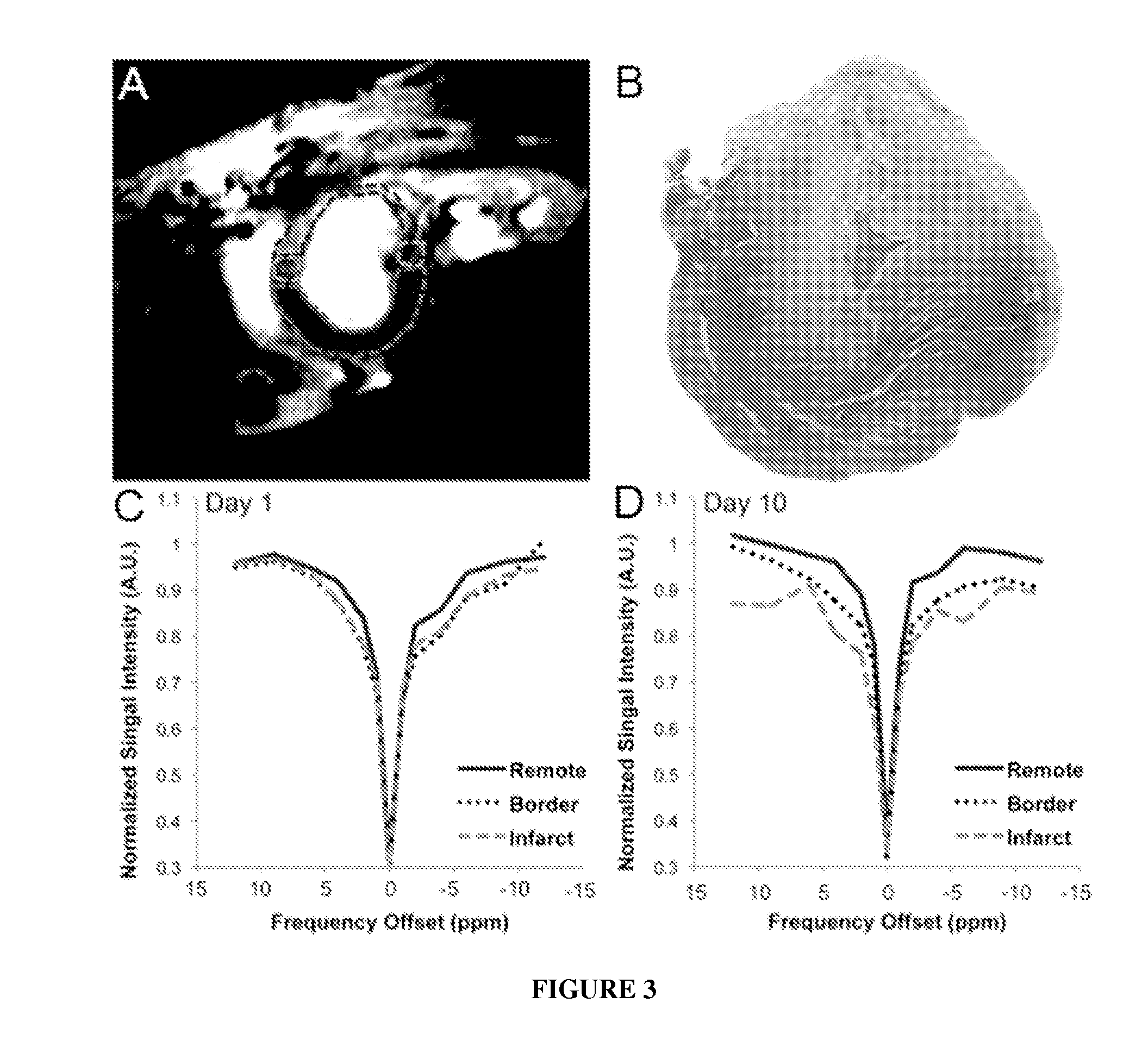Magnetic resonance imaging for detecting cardiac diseases
a magnetic resonance imaging and cardiac disease technology, applied in the field of magnetic resonance imaging methods for detecting cardiac diseases, can solve the problems of fibrosis imaging methods, increased risk of sudden cardiac death, and inability to study fibrosis and early identification of fibrotic development in high-risk patients
- Summary
- Abstract
- Description
- Claims
- Application Information
AI Technical Summary
Benefits of technology
Problems solved by technology
Method used
Image
Examples
example 1
Quantitative Magnetization Transfer Contrast MRI of Tissue Fibrosis
[0042]In this work, the inventors of the instant application applied the MT / CEST encoded steady state cardiac imaging method to in vivo MT-mediated monitoring of fibrotic scar formation following myocardial infarction (MI) in the mouse heart. Further applications of these techniques are myriad and expanded upon in further detail below.
Methods
Pulse Sequence Development
[0043]The pulse sequence diagram for the MT / CEST encoded steady state cardiac imaging sequence is shown in FIG. 1A. This sequence employs a saturation module (Gaussian, flip angle=270°, bandwidth=200 Hz, duration=13.7 ms, number of pulses=28) prior to a constant TR gradient echo readout module (TR / TE=10.2 / 3.5 ms, flip angle=10°, number of acquisitions=100) in order to encode the MT / CEST effect into the steady state longitudinal magnetization within the readout module. The total number of sequence repetitions (saturation and readout modules) was 128. Impo...
PUM
 Login to View More
Login to View More Abstract
Description
Claims
Application Information
 Login to View More
Login to View More - R&D
- Intellectual Property
- Life Sciences
- Materials
- Tech Scout
- Unparalleled Data Quality
- Higher Quality Content
- 60% Fewer Hallucinations
Browse by: Latest US Patents, China's latest patents, Technical Efficacy Thesaurus, Application Domain, Technology Topic, Popular Technical Reports.
© 2025 PatSnap. All rights reserved.Legal|Privacy policy|Modern Slavery Act Transparency Statement|Sitemap|About US| Contact US: help@patsnap.com



